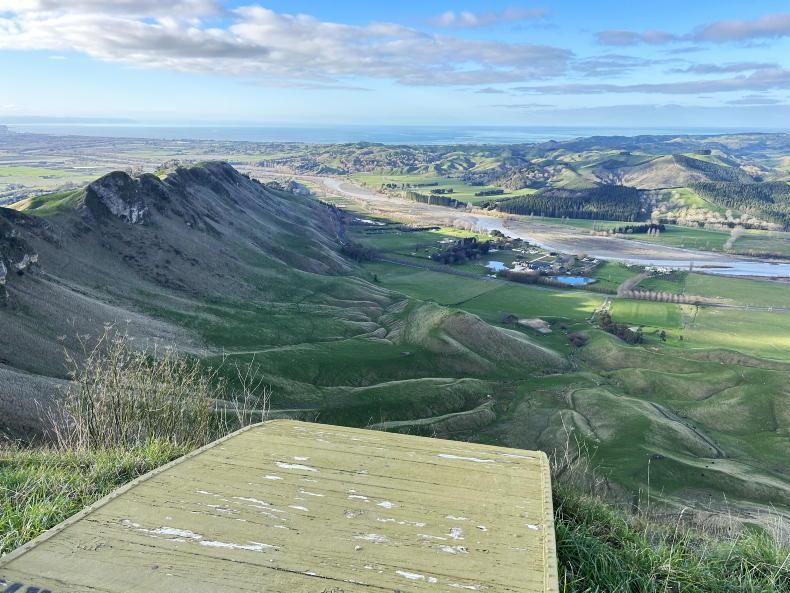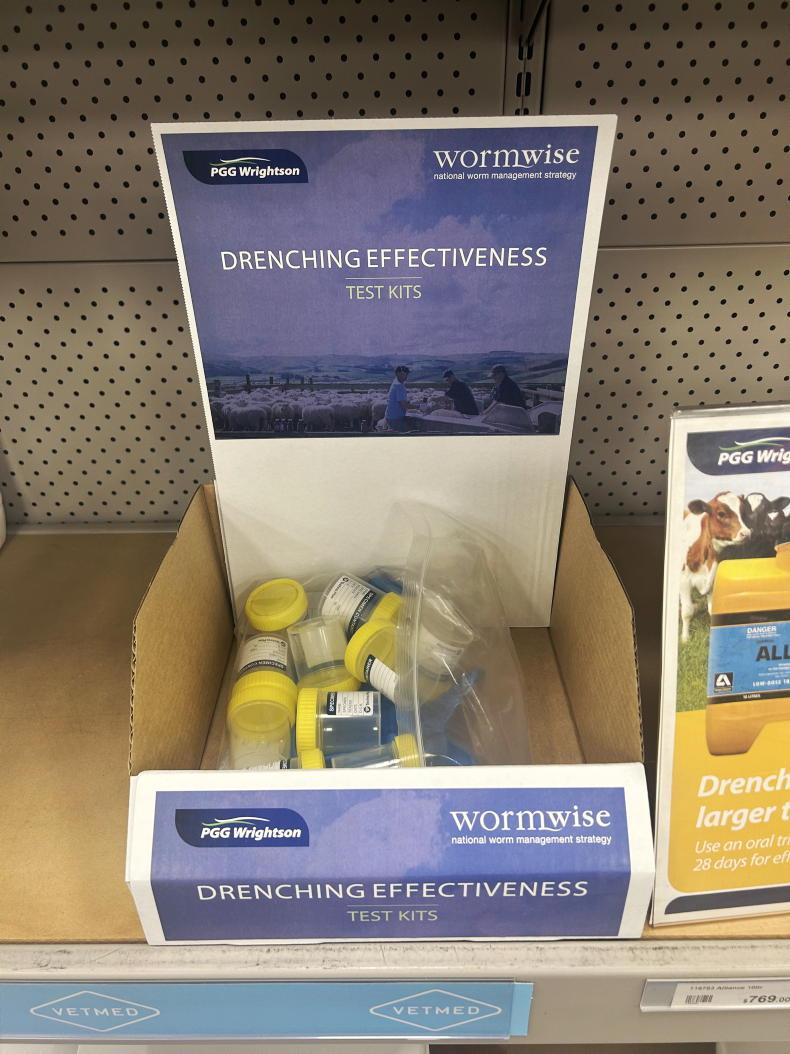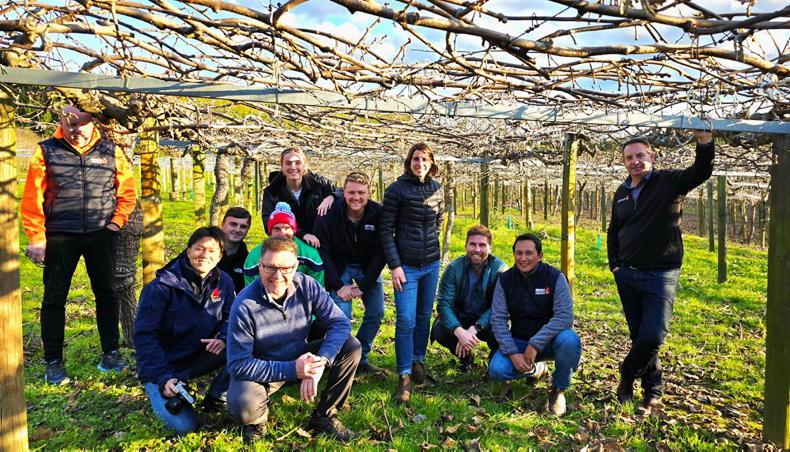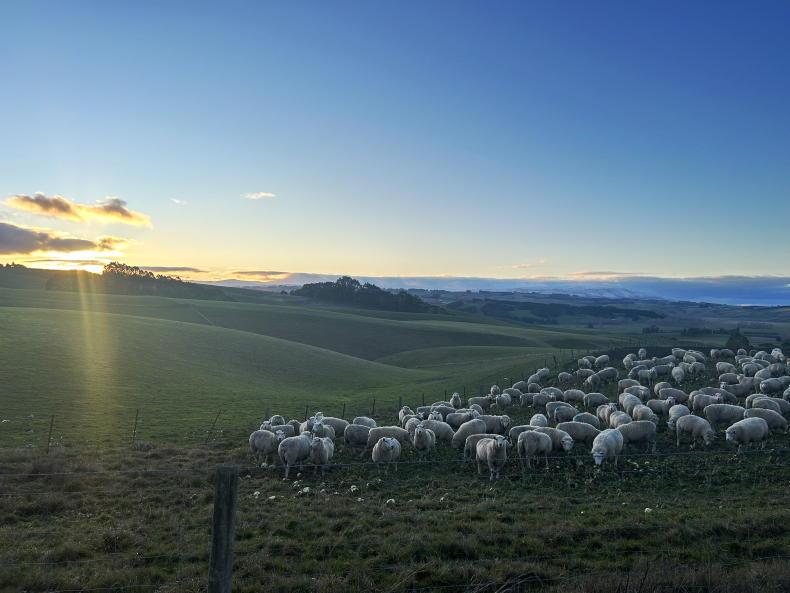Before I arrived in New Zealand as part of my Nuffield Scholarship, Hawkes Bay vet Dave Warburton told me, “subsidy is a dirty word in New Zealand”.
To follow up on this, I met with NZ sheep farming legend Murray Rohloff for a history lesson. Murray recounted the era when 40% of their income was subsidies.
It began in the 1980s when prime minister Robert Muldoon introduced subsidies to incentivise increasing stock numbers. The decade before had been difficult for the NZ economy with the oil crises of the 1970s and the UK’s assession to the EU which introduced cripplingly small quotas on NZ’s primary exports of red meat and dairy.
The NZ government decided to try farm its way out of difficulty.
More sheep equals more money, right? Murray called it “Muldoon’s skinny sheep programme.” If it had four legs, it was kept.
After this programme failed to turn the economy around, a new government was elected in 1984 and farming subsidies were abolished overnight. These years were traumatic for NZ farmers.
Functional, productive, low-input sheep became a necessity and this created the foundation for the NZ sheep industry we see today - standards of excellence Brian Cody would be proud of.
Highlighting the current level of efficiency, Murray noted Earnscleugh station, which is running 22,000 sheep with just four full-time staff.
Sheep to people
Since the skinny sheep programme, NZ has dropped its sheep to people ratio from 22:1 to 5:1. Many farmers have converted to dairying or planted land with radiata pine, although I’m told the most profitable land use is growing Kiwis, with a €130,000/ha return.
However, output per sheep has doubled, owing to improvements in grassland management and the first performance recorded sheep breeding programmes in the world.
When we discussed the differences between Ireland and NZ, farmers told me they would rather continue farming without subsidies because of what it taught them.
Murray said in the 1970s, NZ farmers were excellent land developers but poor sheep farmers.
Things have changed dramatically since then. The farmers I met were talented and innovative business people, operating with attention to detail at a large scale. They know the farm numbers and KPIs off by heart.
This may come across as spreadsheet farming, but this is what is required to be really efficient and make money when you are completely exposed to global market forces, and will feel the full impact of your good and bad decision-making due to lack of available subsidies.
The world’s highest levels of drench resistance
When we started talking about parasites, Murray Rohloff explained that for his generation, drenching all stock (ewes and lambs) was regularly done because it was cheap, easy, and delivered so much benefit.
As a consequence, anthelmintic resistance is now more prevalent in New Zealand than anywhere else in the world.

The view from Te Mata Peak showcases the hilly nature of New Zealand. Much of the flats have gone to dairy, leaving the hill country for sheep. \ Nick Cotter
One third of sheep farms have triple resistance (when a white, yellow, and clear drench mixed together fails to kill at least 95% of the worms), and the number of farms with triple resistance has doubled since 2020.
The impact of drench resistance is being felt at farm level.
Wellington-based sheep and beef farmer Lesley Coppell told me she had to refinance her farm because of drench resistance, after the problem ruined their margins.
Their farm was purchased in 2007 and Lesley said it never performed very well. Ewes were constantly in poor condition, and lambs were difficult to finish.
In 2021, Lesley got her answer why – they had triple drench resistance.
The triple drench they were using to quarantine bought-in purchases, unknown to them, was not working.
Since then, they have completely overhauled the farm system.
They are now weaning lambs 2kg heavier, and triple drenches on faecal egg count reduction test results are working well again.
Smiling, she tells me after checking on a group of recently drenched ewe lamb replacements: “Wow, is that what an effective drench looks like?”.
To my surprise, Lesley said that drench resistance is now a factor for banks lending to NZ sheep farmers.
I also visited Rangitaiki Station, where I spoke with farm manager James Van Bohemen.
This 8,000ha farm is government-owned under the Pamu company. Pamu is New Zealand’s largest farmer, with 360,000ha across 112 farms and 1.3m sheep, deer, and cattle.
Pamu is frank about the scale of drench resistance in its business: 15 of its 27 North Island sheep farms, including Rangitaiki, have triple resistance.
Rangitaiki carries 8,800 Romneys and dairy beef has become a key operation. Internal parasites have been a big problem with the resistance issue, in addition to drought and pasture reversion challenges. Production had fallen 40%, and death rates doubled.
Again, a farm system overhaul has been made, and it has resulted in a doubling of calf average daily weight gain, healthier bulls, and reduced workload.
These farms turned around drench resistance by working closely with their vets and attending ‘Wormwise’ workshops run by levy body Beef and Lamb New Zealand (BLNZ).
On my trip, I met with Ginny Dodunski, a highly accomplished vet who manages the Wormwise programme.
The workshops are focused on a farm systems approach. According to Ginny, “drench resistance is a great way to motivate better farming practice in general. We’re looking at organising farm systems and how it looks from a profit point of view. That’s what people want.”

Wormwise drench efficacy check kits in a PGG Wrightson farm supplies store near Ashburton on NZ’s South Island. \ Nick Cotter
Ginny explained that in the face of triple drench resistance, the key change has been reducing stocking rates and/or selling all lambs at weaning so ewes are fed better. When sheep are fed better they largely don’t need drenching. Ewes are then lambing down in better body condition score, lambs are heavier at weaning, they get off the farm faster, and all of this means less drench inputs. Also, only novel active drenches (Startect and Zolvix) are used for two to three years.
A practice of buying in lambs from farms with 100% effective drenches is also becoming popular, and Wormwise is establishing an assurance standard for this.
Who would have thought after a decades-long pursuit of parasite elimination to get every last bit of performance, farmers are now importing worms to reverse drench resistance.
So, is resistance reversible? Yes. If it’s reversible, why bother worrying about it? I’d liken it to smoking. ‘The chains of habit are too light to be felt, until they are too heavy to be broken’; we don’t realise that our habits are gradually creating a problem.
At low or moderate levels, it’s nearly invisible; by the time it becomes obvious, undoing the damage involves big changes that are difficult and expensive. No different to tackling smoking, the key is education.
Organic sheep in New Zealand
We’re organic at home for more than 10 years, so I made it my business to visit Nuffield scholar Allan Robertson of Avalon Genetics, one of the few organic livestock farmers in NZ. He has farmed all of his 1,300ha organically for the last 26 years.

NZ lamb in a local supermarket priced at $63.18/kg (€33.50/kg), quotes 3.8 kg CO2e for a 220g portion (3.56 kg of this is on-farm emissions). Teagasc puts Irish lamb at 32.3 kg CO2e/kg carcase; with a 72 % meat yield, that’s ˜ 5.1 kg CO2e for the same 220g. \ Nick Cotter
Under NZ organic rules, sheep are limited to just two lifetime drenches, and mectin drenches (clear drenches) are banned. In Allan’s system, lambs receive just one drench post-weaning, and no animals over 12 months old are drenched.
On a closing note, Murray Rohloff spoke with huge admiration of Dr Seamus Hanrahan of Teagasc who came up with the Belclare breed.
Murray visited Ireland many times but spoke of the lack of economic incentives to invest in good genetics.
Even in NZ, he said, “On the day of sales the priorities are often forgotten about, it’s just ‘get a ram’”.
It’s good to see that the Sheep Improvement Scheme is helping address this in Ireland.

The Nuffield group learning about Kiwi growing on NZ Nuffield scholar Simon Cook’s farm. \ Ashley Wiese

Near Allan Robertson’s home at the bottom of NZ’s South Island, lambs are being finished on ‘worm clean’ brassica crops. \ Nick Cotter
Before I arrived in New Zealand as part of my Nuffield Scholarship, Hawkes Bay vet Dave Warburton told me, “subsidy is a dirty word in New Zealand”.
To follow up on this, I met with NZ sheep farming legend Murray Rohloff for a history lesson. Murray recounted the era when 40% of their income was subsidies.
It began in the 1980s when prime minister Robert Muldoon introduced subsidies to incentivise increasing stock numbers. The decade before had been difficult for the NZ economy with the oil crises of the 1970s and the UK’s assession to the EU which introduced cripplingly small quotas on NZ’s primary exports of red meat and dairy.
The NZ government decided to try farm its way out of difficulty.
More sheep equals more money, right? Murray called it “Muldoon’s skinny sheep programme.” If it had four legs, it was kept.
After this programme failed to turn the economy around, a new government was elected in 1984 and farming subsidies were abolished overnight. These years were traumatic for NZ farmers.
Functional, productive, low-input sheep became a necessity and this created the foundation for the NZ sheep industry we see today - standards of excellence Brian Cody would be proud of.
Highlighting the current level of efficiency, Murray noted Earnscleugh station, which is running 22,000 sheep with just four full-time staff.
Sheep to people
Since the skinny sheep programme, NZ has dropped its sheep to people ratio from 22:1 to 5:1. Many farmers have converted to dairying or planted land with radiata pine, although I’m told the most profitable land use is growing Kiwis, with a €130,000/ha return.
However, output per sheep has doubled, owing to improvements in grassland management and the first performance recorded sheep breeding programmes in the world.
When we discussed the differences between Ireland and NZ, farmers told me they would rather continue farming without subsidies because of what it taught them.
Murray said in the 1970s, NZ farmers were excellent land developers but poor sheep farmers.
Things have changed dramatically since then. The farmers I met were talented and innovative business people, operating with attention to detail at a large scale. They know the farm numbers and KPIs off by heart.
This may come across as spreadsheet farming, but this is what is required to be really efficient and make money when you are completely exposed to global market forces, and will feel the full impact of your good and bad decision-making due to lack of available subsidies.
The world’s highest levels of drench resistance
When we started talking about parasites, Murray Rohloff explained that for his generation, drenching all stock (ewes and lambs) was regularly done because it was cheap, easy, and delivered so much benefit.
As a consequence, anthelmintic resistance is now more prevalent in New Zealand than anywhere else in the world.

The view from Te Mata Peak showcases the hilly nature of New Zealand. Much of the flats have gone to dairy, leaving the hill country for sheep. \ Nick Cotter
One third of sheep farms have triple resistance (when a white, yellow, and clear drench mixed together fails to kill at least 95% of the worms), and the number of farms with triple resistance has doubled since 2020.
The impact of drench resistance is being felt at farm level.
Wellington-based sheep and beef farmer Lesley Coppell told me she had to refinance her farm because of drench resistance, after the problem ruined their margins.
Their farm was purchased in 2007 and Lesley said it never performed very well. Ewes were constantly in poor condition, and lambs were difficult to finish.
In 2021, Lesley got her answer why – they had triple drench resistance.
The triple drench they were using to quarantine bought-in purchases, unknown to them, was not working.
Since then, they have completely overhauled the farm system.
They are now weaning lambs 2kg heavier, and triple drenches on faecal egg count reduction test results are working well again.
Smiling, she tells me after checking on a group of recently drenched ewe lamb replacements: “Wow, is that what an effective drench looks like?”.
To my surprise, Lesley said that drench resistance is now a factor for banks lending to NZ sheep farmers.
I also visited Rangitaiki Station, where I spoke with farm manager James Van Bohemen.
This 8,000ha farm is government-owned under the Pamu company. Pamu is New Zealand’s largest farmer, with 360,000ha across 112 farms and 1.3m sheep, deer, and cattle.
Pamu is frank about the scale of drench resistance in its business: 15 of its 27 North Island sheep farms, including Rangitaiki, have triple resistance.
Rangitaiki carries 8,800 Romneys and dairy beef has become a key operation. Internal parasites have been a big problem with the resistance issue, in addition to drought and pasture reversion challenges. Production had fallen 40%, and death rates doubled.
Again, a farm system overhaul has been made, and it has resulted in a doubling of calf average daily weight gain, healthier bulls, and reduced workload.
These farms turned around drench resistance by working closely with their vets and attending ‘Wormwise’ workshops run by levy body Beef and Lamb New Zealand (BLNZ).
On my trip, I met with Ginny Dodunski, a highly accomplished vet who manages the Wormwise programme.
The workshops are focused on a farm systems approach. According to Ginny, “drench resistance is a great way to motivate better farming practice in general. We’re looking at organising farm systems and how it looks from a profit point of view. That’s what people want.”

Wormwise drench efficacy check kits in a PGG Wrightson farm supplies store near Ashburton on NZ’s South Island. \ Nick Cotter
Ginny explained that in the face of triple drench resistance, the key change has been reducing stocking rates and/or selling all lambs at weaning so ewes are fed better. When sheep are fed better they largely don’t need drenching. Ewes are then lambing down in better body condition score, lambs are heavier at weaning, they get off the farm faster, and all of this means less drench inputs. Also, only novel active drenches (Startect and Zolvix) are used for two to three years.
A practice of buying in lambs from farms with 100% effective drenches is also becoming popular, and Wormwise is establishing an assurance standard for this.
Who would have thought after a decades-long pursuit of parasite elimination to get every last bit of performance, farmers are now importing worms to reverse drench resistance.
So, is resistance reversible? Yes. If it’s reversible, why bother worrying about it? I’d liken it to smoking. ‘The chains of habit are too light to be felt, until they are too heavy to be broken’; we don’t realise that our habits are gradually creating a problem.
At low or moderate levels, it’s nearly invisible; by the time it becomes obvious, undoing the damage involves big changes that are difficult and expensive. No different to tackling smoking, the key is education.
Organic sheep in New Zealand
We’re organic at home for more than 10 years, so I made it my business to visit Nuffield scholar Allan Robertson of Avalon Genetics, one of the few organic livestock farmers in NZ. He has farmed all of his 1,300ha organically for the last 26 years.

NZ lamb in a local supermarket priced at $63.18/kg (€33.50/kg), quotes 3.8 kg CO2e for a 220g portion (3.56 kg of this is on-farm emissions). Teagasc puts Irish lamb at 32.3 kg CO2e/kg carcase; with a 72 % meat yield, that’s ˜ 5.1 kg CO2e for the same 220g. \ Nick Cotter
Under NZ organic rules, sheep are limited to just two lifetime drenches, and mectin drenches (clear drenches) are banned. In Allan’s system, lambs receive just one drench post-weaning, and no animals over 12 months old are drenched.
On a closing note, Murray Rohloff spoke with huge admiration of Dr Seamus Hanrahan of Teagasc who came up with the Belclare breed.
Murray visited Ireland many times but spoke of the lack of economic incentives to invest in good genetics.
Even in NZ, he said, “On the day of sales the priorities are often forgotten about, it’s just ‘get a ram’”.
It’s good to see that the Sheep Improvement Scheme is helping address this in Ireland.

The Nuffield group learning about Kiwi growing on NZ Nuffield scholar Simon Cook’s farm. \ Ashley Wiese

Near Allan Robertson’s home at the bottom of NZ’s South Island, lambs are being finished on ‘worm clean’ brassica crops. \ Nick Cotter











 This is a subscriber-only article
This is a subscriber-only article










SHARING OPTIONS: